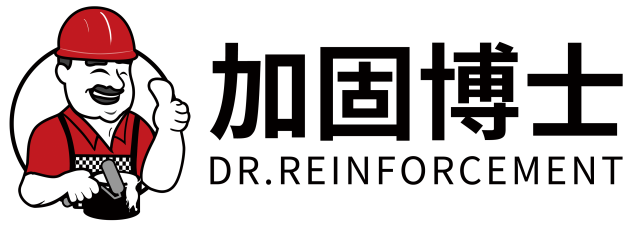The Revolutionary Impact of Carbon Fiber Materials in Engineering
In the realm of modern engineering, few materials have made such a dramatic impact as carbon fiber plate. This extraordinary composite material has revolutionized multiple industries with its remarkable combination of strength, lightness, and versatility. From aerospace applications to consumer products, carbon fiber plate continues to push the boundaries of what's possible in engineering and design.
As engineers and designers seek ever more efficient and powerful solutions, carbon fiber plate has emerged as a cornerstone material that delivers exceptional performance across numerous applications. Its unique properties make it an ideal choice for projects where traditional materials like steel or aluminum fall short.
Core Applications in Aerospace and Aviation
Aircraft Structural Components
The aerospace industry has embraced carbon fiber plate as a primary material in aircraft construction. Modern commercial and military aircraft utilize this advanced material in wing structures, fuselage panels, and control surfaces. The material's high strength-to-weight ratio allows for significant fuel savings while maintaining structural integrity under extreme conditions.
Engineers have developed sophisticated layering techniques for carbon fiber plate implementation in aircraft design, creating structures that can withstand intense pressures and temperatures while remaining remarkably lightweight. This has led to increased range capabilities and improved overall aircraft performance.
Space Exploration Technology
Space vehicles and satellites extensively utilize carbon fiber plate in their construction. The material's resistance to thermal expansion and contraction makes it ideal for the harsh conditions of space. Spacecraft components built with carbon fiber plate maintain their structural properties despite extreme temperature variations.
The integration of carbon fiber plate in space technology has enabled the development of larger solar panels for satellites and more robust protective shields for space vehicles. These applications continue to evolve as new manufacturing techniques emerge.

Automotive Engineering Applications
Performance Vehicle Components
High-performance automotive manufacturers have embraced carbon fiber plate for its exceptional strength and weight-saving properties. From chassis components to body panels, this versatile material has become integral to modern sports car design. The reduction in vehicle weight translates directly to improved acceleration, handling, and fuel efficiency.
Racing teams particularly benefit from carbon fiber plate applications, using the material in everything from brake cooling ducts to aerodynamic elements. The ability to create complex shapes while maintaining structural integrity has opened new possibilities in automotive design.
Electric Vehicle Innovation
The electric vehicle industry has found numerous applications for carbon fiber plate, particularly in battery enclosures and structural reinforcement. The material's excellent strength-to-weight characteristics help offset the considerable weight of battery systems, contributing to extended range and improved performance.
Manufacturers are developing new methods to incorporate carbon fiber plate into mass-produced electric vehicles, making this premium material more accessible to the broader automotive market. These innovations are helping to drive the transition to sustainable transportation.
Industrial and Manufacturing Solutions
Robotics and Automation
The robotics industry has embraced carbon fiber plate for its ability to create lightweight yet rigid components. Industrial robots benefit from reduced inertia in moving parts, allowing for faster operation and increased precision. The material's durability ensures long-term reliability in demanding manufacturing environments.
Advanced manufacturing processes have made it possible to create complex carbon fiber plate components with embedded sensors and electrical pathways, enabling smarter and more capable robotic systems.
Heavy Equipment Components
Even in heavy industry, carbon fiber plate finds applications where weight reduction provides significant advantages. Crane components, conveyor systems, and specialized tools benefit from the material's unique properties. The reduced weight allows for larger operating capacities and improved energy efficiency.
Engineers continue to find innovative ways to implement carbon fiber plate in industrial equipment, often combining it with traditional materials to achieve optimal performance and cost-effectiveness.
Sporting Goods and Recreation
Professional Sports Equipment
The sporting goods industry has thoroughly embraced carbon fiber plate technology. From tennis rackets to hockey sticks, the material's properties enhance athletic performance through improved power transfer and reduced fatigue. Professional athletes particularly benefit from the precise tuning possible with carbon fiber plate construction.
Manufacturers continue to develop new applications, creating equipment that provides competitive advantages while meeting strict sporting regulations. The material's versatility allows for customization to meet specific athletic requirements.
Recreational Products
Beyond professional sports, carbon fiber plate has found its way into various recreational products. Bicycles, skateboards, and water sports equipment benefit from the material's durability and performance characteristics. The growing accessibility of carbon fiber plate has made high-performance recreational equipment available to enthusiasts at all levels.
The recreation industry continues to innovate with carbon fiber plate, creating products that enhance user experience while maintaining safety and reliability.
Frequently Asked Questions
What makes carbon fiber plate superior to traditional materials?
Carbon fiber plate offers an exceptional combination of high strength, low weight, and resistance to environmental factors. It typically provides better strength-to-weight ratios than steel or aluminum, while also offering superior fatigue resistance and thermal stability. These properties make it ideal for applications where performance and efficiency are crucial.
How long does carbon fiber plate typically last?
When properly engineered and maintained, carbon fiber plate components can last for decades. The material doesn't corrode like metals and maintains its structural properties under normal conditions. However, its longevity depends on factors such as exposure to UV radiation, impact damage, and the specific application requirements.
Is carbon fiber plate environmentally sustainable?
While the production of carbon fiber plate requires significant energy, its long lifespan and contribution to energy efficiency in various applications can offset initial environmental impacts. The industry is actively developing more sustainable manufacturing processes and recycling methods to improve its environmental footprint.


